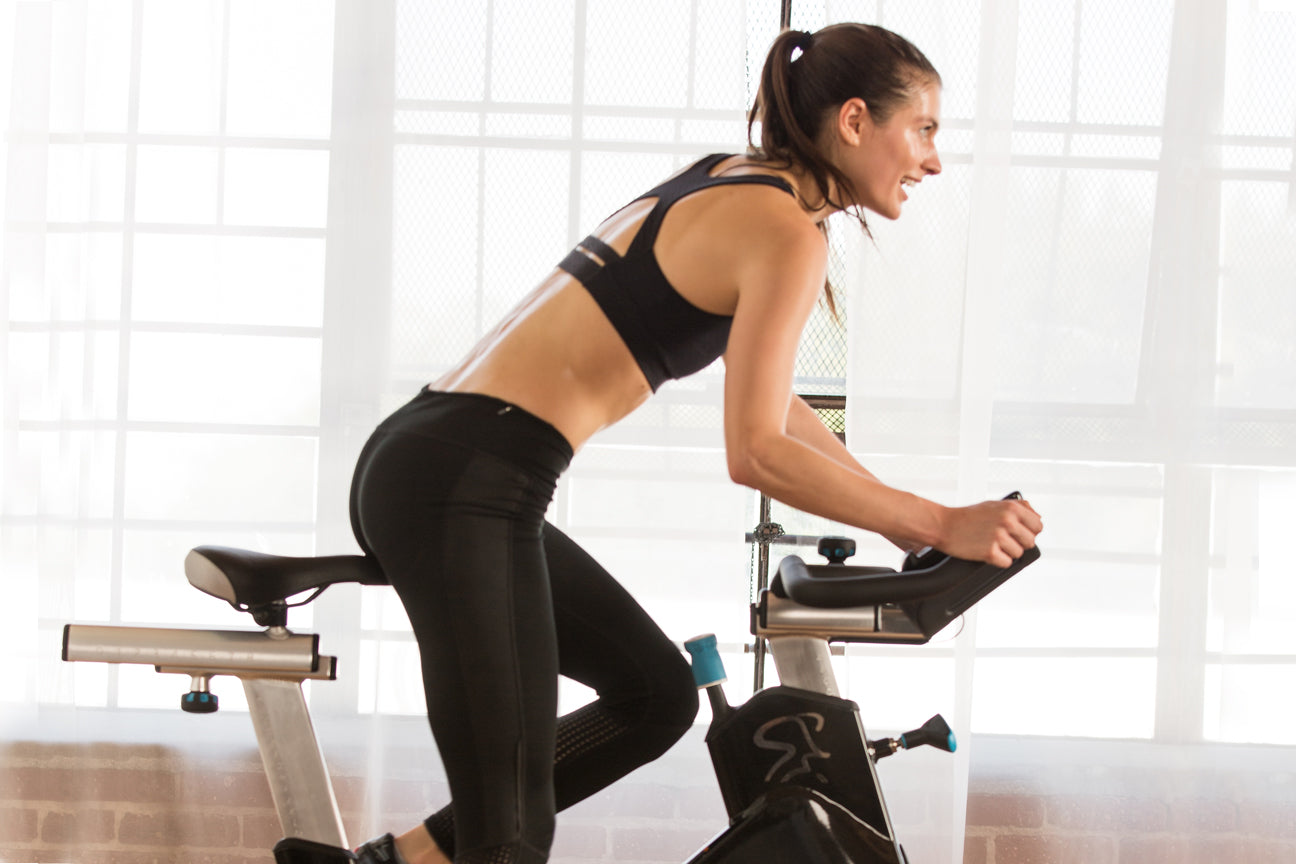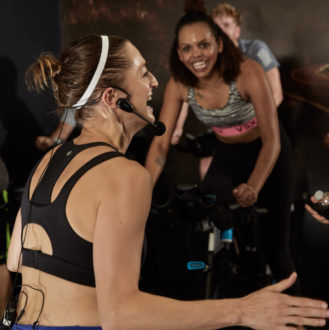It’s like riding a bike—literally. Spinning® movements correspond to moves you would do on a road bike. There are five core movements with corresponding hand positions to position you in optimal riding posture.
The five core movements of the Spinning program are as follows:
- Seated Flat – Hand Position 1,2 or 2.5
- Seated Climb – Hand Position 2 or 2.5
- Standing Flat – Hand Position 2 or 2.5
- Standing Climb – Hand Position 3
- Jumps – Hand Position 2 or 2.5
This diagram shows the area of the handlebars for each hand position:

Much like golfers work on mastering the perfect swing, it is important in the Spinning® program to work on form and fluidity. Eliminating unnecessary movements will maximize the efficiency of your workout and leave you energized instead of fatigued. It’s the subtle improvements in your form, fluidity, pace and rhythm that will increase the benefits of each class you take.
Unfortunately, sometimes riders are tempted to “invent” new positions and movements on the Spinner® bike, which may put their safety at risk. Here are some of the questions that determine whether or not a movement should be used in Spinning® class:
- Can you perform the movement on a road bike? If not, don’t do it!
- Is there a better way to accomplish the same goal?
- Are you in control?
- Does the movement seem to have a physiological function, or is it just used as choreography?
- Is the movement safe and efficient?
- Does the movement feel natural?
- Does the move feel safe on your joints? Pay attention to your knees, elbows and lower back.
Excessive Upper Body Movement
Excessive upper body movement involves numerous unsafe movements that should not be used in a Spinning® class. A few of the contraindicated movements to watch out for include:
- Push-ups
- Twists
- Crunches
- Shoulder drops
- Bows
- Cornering
First, if you did any of these moves on a real bike, you’d fall off! There is no increased benefit to moves like crunches or push-ups on the bike, so why not perform these correctly and more effectively on the ground or on a stability ball? Besides being awkward and increasing the potential for joint and soft tissue injury, these moves place the upper body in a stressful position relative to the lower body. An exaggerated movement may cause your back and neck to move laterally while your legs are being driven in a linear circle by the fixed-gear pedal system.
Riding Posture
Riding seated in Hand Position 3 might seem perfectly harmless, particularly since elite cyclists ride in a similar position using aero bars. Since triathletes have custom-fitted bikes with shorter top tubes, they can stretch into this position comfortably. On the Spinner® bike, this hyper-flexed position may strain the back and can be uncomfortable, particularly for shorter individuals.
Riding with One Hand
Whether you’re doing a Standing or Seated Flat or Climb, riding with only one hand, or no hands at all, causes the rider to lose connection with the bike. When riding unsupported, it is difficult to maintain constant pressure throughout the pedal stroke; the rider can only mash downwards on the pedals. Riding with one or no hands is especially dangerous at a high cadence (110 RPM) or heavy resistance with the body leaning forward (as in a sprint). This position places considerable torque on the lower spinal disks. Also, if you’re riding with only one hand on the handlebars during a Standing Climb and that hand slips, you could fall onto the handlebars or flywheel. Similarly, if the foot slips off the pedal, it would be hard to steady yourself, which may also cause severe injury.
“Squats” and Other Isolated Movements
Isolating the lower body while pedaling might feel like a great exercise for the quadriceps, but it can place undue strain on the knees and spine. Instead, try a hill climb in Hand Position 2.
Pedal Stroke
Do not pedal backwards or with one foot out of the toe cage or cleat. Pedaling with one leg is an advanced drill that elite cyclists practice on trainers—not fixed-gear bikes like the Spinner® bike. On a Spinner® bike, these drills have absolutely no benefit, since muscles work the same and burn equal numbers of calories pedaling forward and backward.
Jumping Too Quickly
Jumps are effective and challenging, but when they’re performed too fast, they don’t do any good. Since the focus of Jumps is to create smooth transitions between seated and standing positions, the key is proper speed. If Jumps are performed too quickly, the exercise is ineffective.
Speed
Riding at a high cadence without resistance is ineffective on a Spinner® bike. Instead, ride at 110 RPM or less. If you begin to bounce in the saddle, increase the resistance. Riding at a consistent pace with good resistance develops power, strength and endurance.
Remember, the Spinning® program is easy to follow and designed to help you achieve your training goals. Use common sense and you’ll be riding injury-free and pain-free for years to come!
Ready for more? Watch this video: “How to Ride a Spin® Bike”




Leave a comment
This site is protected by hCaptcha and the hCaptcha Privacy Policy and Terms of Service apply.